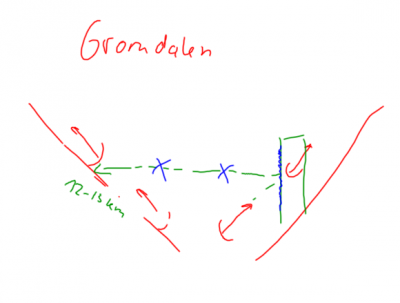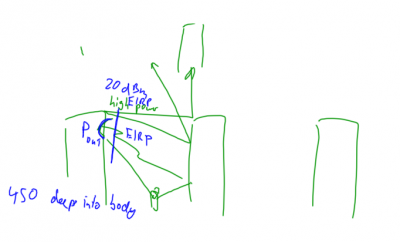UNIK4700/9700-Introduction
| Wiki for ITS | ||||||
|---|---|---|---|---|---|---|
|
UNIK4700/9700-Introduction
| Course | UNIK4700, UNIK9700 |
|---|---|
| Title | Introduction |
| Lecture date | 2014/08/27 0900-1200, room 308@UNIK |
| presented | by Josef Noll |
| Objective | This lecture provides an introduction to the topic. It will address* Radio* Systems* MobilityThe lecture will also include details on the expected outcome, the deliverables and the (optional) exam |
| Learning outcomes | Having joined this lecture, you will
|
| Pensum (read before) | You should have registered for this course :-)
Please read also how to search for literature: Search_for_literature |
| References (further info) | References:
|
| Keywords | Radio, Mobility, Mobile Systems, Capacity |
this page was created by Special:FormEdit/Lecture, and can be edited by Special:FormEdit/Lecture/UNIK4700/9700-Introduction.
Other info
- Google Community UNIK4700: https://plus.google.com/communities/107897964181233758835?cfem=1
- Search for literature
- Streaming at http://lux.unik.no/unik4700-jn/unik-20140829.wmv
- for following from Scheme or any other places, please see information Video_conference
- 29Aug2014 Lecture Notes: Media:20140829UNIK4700.pdf
- 2013 Lecture Notes: Media:UNIK4700-l1-h13.pdf
- Title
- UNIK4700/UNIK9700 Introduction
- Author
- Josef Noll
- Footer
- UNIK4700/9700-Introduction
- Subfooter
- UNIK4700/UNIK9700
⌘ Overview UNIK4700, UNIK9700
Radio and Mobility
- first lecture
- sign up to cwi.unik.no Signup
- confirm your email
- add yourself to UNIK4700H14Participants
- what do you expect
- discuss
- tell
Goal of the course,
- what to achieve
- how to achieve it
Examen
- what to I expect
⌘Meeting calendar
- will be published through this wiki: http://cwi.unik.no/wiki/UNIK4700
- see also lectures from earlier years
based on
- your topics
- the goal we want to achieve
⌘ What to achieve
Academic work
- how we build up list of references
- modelling approach
- detailed list of topic (next slide)
⌘Examen
- Presentation of research topic (mandatory), home work on comparison of selected topics (60 %) and simulation work (40 %).
- The student may ask for an oral exam in which case the home work on comparison of selected topics counts 50%, the simulation work 30% and the oral exam 20%.
Mandatory
- knowledge of presentation material - "how you presented"
- presentation and analysis of 3-4 papers
- programming of user, context....
⌘Evaluation/Grade
Expectations for your presentation
- Define what to present
- Present it such that your colleagues can understand
- Facts/Reference-based presentation
- Evaluate your own work
- Checklist
- relevant for the course
- understandable
- your own evaluation
- scientific: "Don't guess, present references"
Character, Exam
For your own presentation
- focus, focus, focus - be aware of what you want to present, and what not
- make sure the others will understand what you present
- come up with challenges/unsolved issues/your expectation towards that technology
not basis for grade are
- questions during lectures
Alternativer
- evtl "mini-eksamen" i slutten av hver time, spørsmål om spesielle områder
⌘ Goals Radio
- Understand that "radio is not just another IP connection"
- Set-up a good course
- Involve you in giving the course
Radio
- get a basic understanding of radio communication
- can explain the characteristics of radio propagation
- get a feeling for wave propagation and the attenuation
⌘Goals Mobility
- identify the factors for mobility management
- know the characteristics of current mobility schemes
- address topics in current research
Mandatory
- knowledge of presentation material
- presentation and analysis of 3-4 papers
- simulation
Evaluation (draft)
- presentation of topics (own work)
- simulation results
- optional: (final exam)
⌘ Assigned topics
Assignments
Select any topic related to the course, and present a 20-25 min presentation on the topic
- 1. find and select papers/books related to your topic
- 2. come with a suggestion on the direction of your presentation
Topics
- Interference
- 12Sep2014 - Wave Propagation
- 19Sep2014 - Radiation equation, Antennas
- 26Sep2014 - Propagation models: Yun Ai
- 26Sep2014 - Frequency rande and type of wireless communications - Raul
- GSM and UMTS (cell breathing)
- 17Oct2014 - LTE - Solomon
- 17Oct2014 -Voice in LTE - Mikhail Yakubovich
- 10Oct2014 - WiFi long lange standards - Mohsen
- 10Oct2014 - WiMAX - Qihaoli
- 10Oct2014 - Security in NFC - Seraj
Part II assignments
- Cell capacity, System capacity
- Traffic Modelling
- Mobility
- Basic Internet (free access to basic information (text & pictures) on the Internet)
- inverse MVNO: the customer owns the access network
- WLAN system for video communication
- ... (any other topic which you might find interesting)
- Ali Zaher: RFID/NFC
- Dag Ove Eggum: Wimax
- Håvard Austad: Antennas
- Joachim Tingvold: Wave Propagation Parameters
- Johan Tresvig: Wireless HART, ++ISO100, Bluetooth, Zigbee
- Susana Rodriguez de Novoa: WLAN
- Thomas Aasebø: ANT+, Bluetooth, Zigbee
- Naji: Basics of Handover, examples from GSM and UMTS
- Gerard: Attenuation of tropical rain forest in GSM (?), Wifi and WiMAX
Earlier Assignments
- LTE - Andreas
- WRAN - Hemdan
- WiMAX - Reidar
- WiBree - Anders T.
- WiMedia - Eystein
- Wireless USB - Simen
- NFC - Shabnam
- Wireless HART - Magnus
Ali Zaher - NFC (2012)
- Media:Master thesis lu NFC.pdf
- Media:UNIK4700 Security in NFC.pdf
- Media:Specific_absorption_rate_nfc.pdf
- Media:medical_devices_nfc.pdf
- Media:Components of the RFID System.pdf
- Book:RFID Handbook Fundamentals and Applications in Contactless Smart Cards
- Radio Frequency Identification and Near Field Communication Third Edition,
- Parts related to passive devices Type 1 tags and NFC-A Tech: Media:NFC_forum_digital_protocol.pdf
Dag Ove Eggum: WiMAX (2012)
- File:Achieving Wireless Broadband with WiMax.pdf
- Media:IEEE 802.16 Standards - The working group and documents.pdf
- Media:Sleep Mode Operation - WiMax.pdf
- Media:The WiMax IEEE 802.16e Physical Layer Model.pdf
- Media:Wimax - Current Performance Benchmarks and Future Potensial.pdf
Håvard Austad:
- Media:UNIK4700-Antennas.pdf Introduction to patch antennas
- Book: Stallings; Wireless Communications & networks
- Book:Thorvaldsen & Henne; Planning of line-of-sight radio relay system
- Book:Balanis: Antenna Therory: Analysis and Design
Joachim Tingvold:
Johan Tresvig:
- Book: WirelessHART - Applying wireless technology in real-time industrial process control
- Media:A Comparison of WirelessHART and ZigBee for Industrial Applications.pdf
- Media:A Location-determination Application in WirelessHART.pdf
- Media:Comparison of Industrial WSN Standards.pdf
- Media:WirelessHART - Applying wireless technology in real-time industrial process control.pdf
Susana Rodriguez de Novoa:
- Media:UNIK4700-Wlan.pdf
- Media:An_Introduction_to_wifi.pdf
- Media:radiomobile.pdf
- Media:WLANSecurity.pdf
- Book: Antennas and Propagation for Wireless Communication Systems. 2nd Edition
- Book: CCNA Wireless. Oficial Exam Certification Guide
Thomas Aasebø:
- Concurrent operation of Bluetooth low energy and ANT wireless protocols with an embedded controller
- ZigBee and Bluetooth strengths and weaknesses for industrial applications
- Wireless sensor networks: A survey on the state of the art and the 802.15.4 and ZigBee standards
- An ANT based Wireless Body Sensor Biofeedback Network for Medical E-Health Care
- An Overview of the Bluetooth Wireless Technology
- Overview and Evaluation of Bluetooth Low Energy: An Emerging Low-Power Wireless Technology
- Book: Low-Power Wireless Sensor Networks
- Book: Low-powerWireless Sensor Network Platforms
Naji: Basics of Handover, examples from GSM and UMTS
Gerard: Attenuation of tropical rain forest in GSM (?), Wifi and WiMAX
Examples of assignments
|
Radiation equation
Radiation and health
Range of wireless communications
|
System capacity
Propagation models
Systemparamters and performance -
|
Expectations
- select papers -> list of 2 selected papers to Josef (email)
- UiOLibrary how to use IEEE, ACM and other library information to search for papers
- you are able to search without VPN, but for printout of .pdf you need someone with access (Knut, Sarfraz)
- Alternative: scholar.google.com
- starting point: literature list of UNIK4700
- prepare presentation (typical 35 min), focus
- explain content
- point out strengths and weaknesses
- discuss with colleagues
Topics for programming in earlier years
|
Propagation Models
Capacity and range
|
System parameters
Mobile/wireless communications
|
⌘Detailed TOC - General
- History of wireless communications
- History of wireless terminals
- Future trends on wireless communications
- Wireless standardisation forums
- Current wireless technologies
- Technologies and user
- Wireless network types
⌘TOC - Basics of communication
- Electromagnetic signals
- Nyquist Theorem
- Signal/noise ratio
- Shannon Theorem
- Signal strength
⌘TOC - Signal propagation
- Antenna types
- Radiation patterns
- Antenna gain
- basic propagation models (ground wave, sky wave and line of sight (LoS) propagation)
- optical vs radio LoS
- attenuation (free space)
- Noise (thermal, intermodulation, crosstalk, impulse noise)
- Atmospheric absorption
- Multipath propagation
- refraction, reflection, diffraction and scattering
- fading (fast, slow, flat, selective, Rayleigh, Rician, …)
⌘TOC - Propagation models
- Environments (indoor, outdoor to indoor, vehicular)
- outside (Lee, Okumura, Hata, COST231-Hata, COST231-Walfish-Ikegami)
- inside (One-slope, multiwall, linear attenuation)
⌘TOC - Radio interference (see Kaosher's course)
- Co-channel, adjacent-channel, intermodulation, near-end-to-far-end, inter-symbol, simulcast
- Local scatterers
- Frequency planning
⌘TOC Comparison of access technologies
- proximity: RFID and NFC
- short range: ZigBee, Bluetooth and Wibree
- local: Wireless LAN,...
- mobile: GSM, UMTS, IMT-A (WiMAX, LTE)
⌘TOC - Mobility
- Mobility challenges for existing systems
- WLAN Mobile Network
Second half of course will deal with mobility
⌘The five myths of wireless
- Wi-Fi is faster than Ethernet. While the raw data rate of Wi-Fi (11 Mbps) may be faster than the original Ethernet (10 Mbps), Wi-Fi's throughput efficiency is always less. Why?
- The longer the transmission range, the better. That may be true for some wireless communications, but for wireless LANs, a greater transmission range often results in more users per cell and lower per-user throughput. Why?
- Wireless networks can be dangerous to your health. Almost all wireless LANs have radio output levels of less than 100 milliwatts (20 dBm). Is output power the real measure?
- 802.11g will make 802.11a obsolete. Lots of people think that 802.11g will kill 802.11a because it offers the same data rate as 802.11a (54 Mbps) plus backward compatibility with 802.11b. Other factors?
- Wireless LANs are inherently insecure. Yes, there are security issues with the original 802.11b specification, but there are plenty of ways, including the use of VPNs and security gateways, to make wireless as secure as wired. True?
Note: 802.11 is sending with different speeds for header and payload. Header is always transmitted at lowest speed, why?
⌘Wireless Communication
- electromagnetic wave
- wave propagation
- attenuation, scattering
Radio and Mobility:Introduction
⌘Summary
Focus on three communication areas
- ultra short range, e.g. NFC
- vicinity, e.g. Bluetooth
- local area, e.g. WLAN
- mobile communications, e.g. LTE


